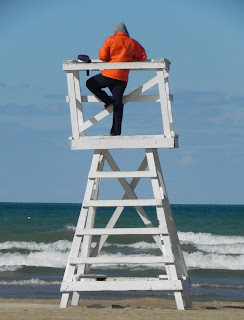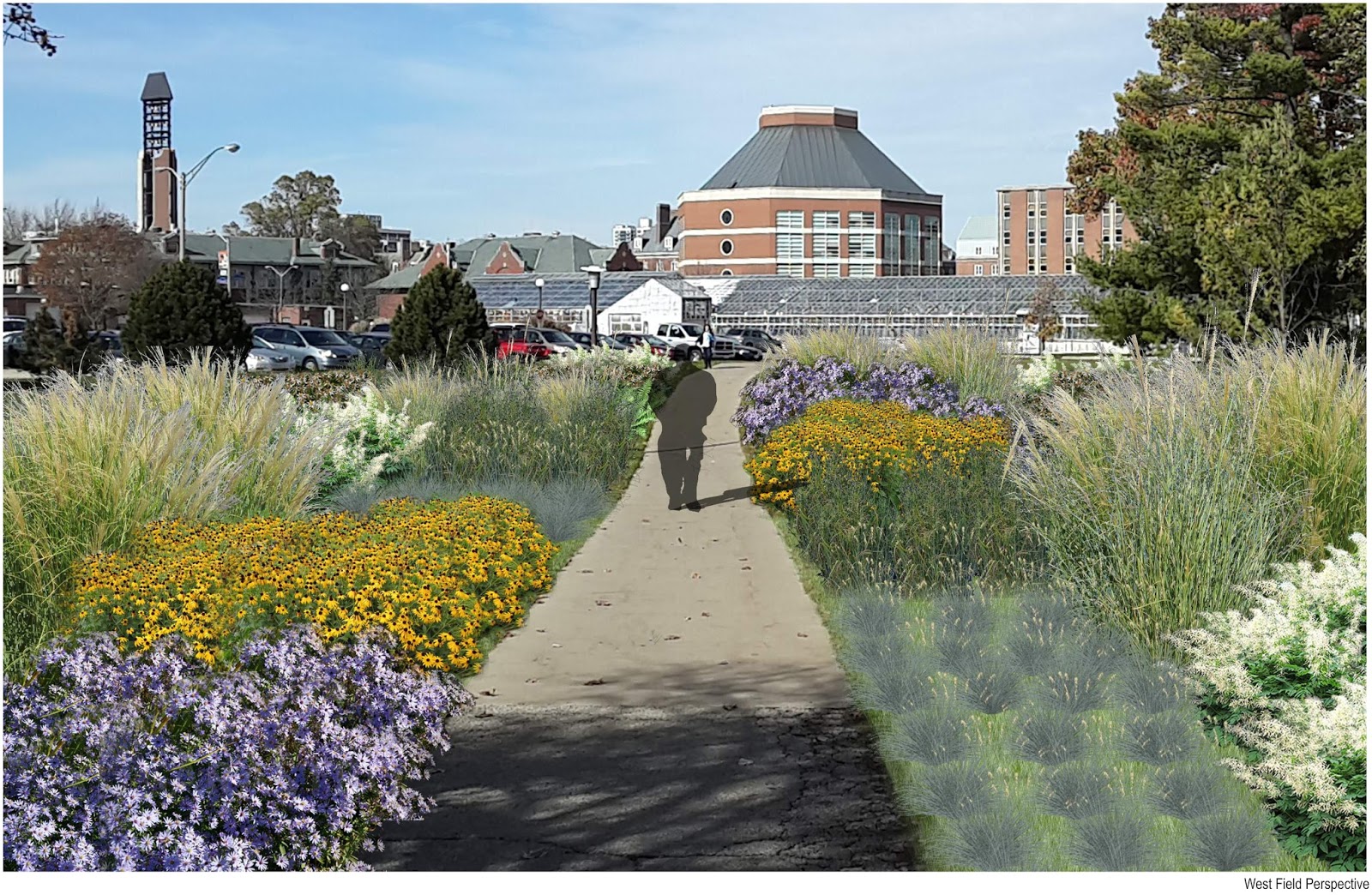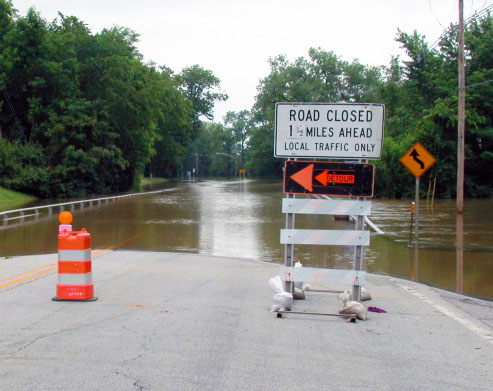May 5th, 2015 by iisg_superadmin
Last month, the U.S. EPA awarded University of Illinois at Chicago and University of Illinois at Urbana-Champaign first and second prizes in their Campus RainWorks Challenge. The national competition recognizes student-led green infrastructure plans and projects to manage stormwater on campus. Eliana Brown, has been following the UIUC plan from the beginning.
The first time I heard that landscapes could be designed to improve water quality, it was a revelation. I knew about the highly-effective bioremediation treatment cells at industrial facilities. But, the fact that the landscapes we walk through in our daily lives could have that power was exciting. What came to be known as “green infrastructure” is an elegant blend of landscape architecture and civil engineering that places of higher learning should embrace.
The EPA Office of Water seems to agree. Since 2012, it has invited students to design innovative green infrastructure projects to show how managing rainfall in a more natural way can benefit their community and the environment.
 Because I’m fond of the small creek running through the University of Illinois’ engineering college—known as Boneyard Creek—I have always wanted to see an entry from my campus. This year, I got my wish and then some. U.S. EPA announced on Earth Day that “Reverse Engineering: The Engineering Campus as Catalyst,” a master plan designed by a multi-disciplinary team of UIUC students under the direction of landscape architecture instructor Tawab Hlimi earned 2nd place. According to the EPA, 64 teams from 23 states submitted entries.
Because I’m fond of the small creek running through the University of Illinois’ engineering college—known as Boneyard Creek—I have always wanted to see an entry from my campus. This year, I got my wish and then some. U.S. EPA announced on Earth Day that “Reverse Engineering: The Engineering Campus as Catalyst,” a master plan designed by a multi-disciplinary team of UIUC students under the direction of landscape architecture instructor Tawab Hlimi earned 2nd place. According to the EPA, 64 teams from 23 states submitted entries.
The plan focuses on improving water quality in Boneyard Creek by installing green streets, roof catchments, bioswales, and rain gardens in the surrounding area. Native plants and pollinator habitats are also proposed to boost the creeks’ ecological role and create more recreational opportunities.
Building off this success, Hlimi and teaching assistant Faezeh Ashtiani showed the plan along with the work of their spring semester students in an exhibit called “Reverse Engineering: Reconfiguring the Urban-Riparian Interface” at [CO] [LAB] in downtown Urbana. Students expanded on the Campus RainWorks plan upstream and in other parts of campus, including three visions of Dorner Driver Retention Pond that add water quality filtration to the existing water storage function.
Looking to the future, Hlimi has applied for a Student Sustainability Committee grant to build a multi-purpose demonstration rain garden.
.
November 20th, 2014 by iisg_superadmin
Eliana Brown recently joined the Illinois Water Resources Center as an outreach specialist. Prior to starting at IWRC, she worked at University of Illinois at Urbana-Champaign Facilities & Services as the MS4 coordinator and at Illinois EPA as a field engineer. Eliana has a M.S. in environmental engineering and a B.S. in general engineering and marketing from the University of Illinois.
The following is a contributing post from Eliana, who has a passion for rain gardens and green infrastructure:
When you were a university student, did you ever reimagine your campus landscape? Students at the University of Illinois did exactly that as an assignment for Landscape Architecture (LA) 452, Native Plants and Design.
The U of I campus has 84 miles of storm sewer, most of which drain rainwater directly to Boneyard Creek. The LA 452 students designed landscapes with elements that capture water and allow it to soak in on-site to reduce loads to the existing storm sewer and creek. These elements (called green infrastructure) include rain gardens, swales, and green roofs. The Environmental Protection Agency (EPA) sees green infrastructure as a way to create sustainable, resilient communities that improve water quality.
EPA has a competition called the Campus RainWorks Challenge that invites “student teams to design an innovative green infrastructure project for their campus showing how managing stormwater at its source can benefit the campus community and the environment.”
According to Jason Berner, EPA environmental protection specialist, who has been involved with administering the competition, it is a great way for students to see how green infrastructure is related to the larger campus master plan. “It moves us beyond single pilot projects, but at the same time, blends both small and large scale thinking,” he explained.
LA 452 instructor Tawab Hlimi is leading the U of I Campus RainWorks entry. Students in his class helped brainstorm ideas for the entry. One of those ideas is pictured. Student Jiwon
Kim reimagined the grounds at the National Soybean Research Building (which happens to house Illinois-Indiana Sea Grant and the Illinois Water Resources Center). Native plant rain gardens intercept stormwater from the building roof and parking lot. During large storms, the design takes advantage of existing storm sewers by overflowing excess water to them.
Like many cities and universities, the U of I began installing storm sewers more than 100 years ago. Storm sewers benefit cities by draining flooded areas. However, they can overload receiving streams and cause unintended damage. Adding green infrastructure elements to the existing infrastructure helps ensure a healthier ecosystem on-site and downstream.
Per Hlimi, “Through a campus wide application of rain gardens, students hybridized native plantings with a superficial stormwater management strategy to meet multiple objectives: accommodating the ‘first flush’ of frequent storm events through detention, infiltration, and biofiltration, reducing the load on existing subsurface infrastructure, improving the water quality entering into the Boneyard Creek, creating habitat for pollinators, and rendering the campus landscape as living laboratory.”
Perhaps one day in the not too distant future, students won’t have to imagine green infrastructure on campus. They’ll see it.
October 9th, 2014 by iisg_superadmin
 Anjanette Riley was at last week’s Resilient Chicago workshop on climate trends and adaptive planning. She had this to say about the event:
Anjanette Riley was at last week’s Resilient Chicago workshop on climate trends and adaptive planning. She had this to say about the event:
Presentation after presentation, what struck me most is just how much climate change already is and will continue to impact our daily lives—and how interconnected those impacts are. Actually, a quick glance at the agenda was all it took to realize this workshop was going to be about much more than just predictions of yearly rainfall or average temperatures. The speakers were climatologists, public health experts, community planners, and policy specialists. And the participants were just as diverse—educators, urban planners, local officials, and private consultants.
Of course, we did talk about climate concepts and trends. IISG’s Molly Woloszyn kicked things off by making sure we were all on the same page about the difference between weather and climate—short-term changes vs. long-term averages. And throughout the day, Illinois State Climatologist Jim Angel told us that temperatures have risen by roughly 1.5o F over the last century and that we can expect drier summers and more precipitation in winter, spring, and fall.
Much of the day, though, was dedicated to what these changes mean for the people and wildlife that call the Chicago area home. Some impacts are pretty straightforward—you have likely seen them already. Warmer temperatures mean greater strain on an aging energy infrastructure and higher rates of heatstroke. Wetter springs means more stormwater runoff and basement flooding. And summertime droughts could lower crop yields and increase food prices.
Many were hard to see at first glance. As nice as they sound to many of us, warmer winters could have serious repercussions for public health, infrastructure, and Great Lake ecosystems. For example, with less frequent deep freezes, some disease-carrying insects could persist throughout the year. Fluctuations between freezing and thawing will also create more potholes and cracks in building exteriors. And—most unexpected to me—warmer water temperatures could make Lake Michigan and surrounding waterways more welcoming to a whole new suite of invasive species that could never have lived there before.

Fortunately, presenters came armed with solutions as well. Most were adaptation strategies—steps to prepare for climate change impacts. Speakers from Chicago Wilderness, the Alliance for the Great Lakes, and Hey and Associates, for example, showed how planting native trees, building rain gardens, and restoring natural areas could simultaneously filter pollutants from stormwater, lower air temperatures, and reconnect habitats divided by urbanization. Samuel Dorevitch, a professor at the University of Illinois at Chicago, and Dan Gabel from ComEd talked about the importance of early warning systems and emergency response plans. And the Center for Neighborhood Technology’s Harriet Festing introduced their Rain Readyprogram, which helps homeowners and communities understand flooding causes and prepare for future storms.
But don’t just take my word for it. All the presentations will soon be available on the Resilient Chicago website. In the meantime, peruse the many Midwestern Regional Climate Center resources on climate change predictions and adaptation planning.
August 13th, 2014 by iisg_superadmin
The recent contamination of drinking water in Toledo, Ohio brought the risks of algal blooms center stage and raised serious concerns for the future. Questions on everybody’s mind are what are toxic algal blooms, what causes them, and what can we do? Michael Brennan, IISG’s water quality outreach specialist, has some answers:
Regional scientists have been concerned about algal blooms like the one we saw a few weeks ago for some time. Its unique conditions make western Lake Erie particularly susceptible to algae blooms, both toxic and non-toxic. Warm temperatures, shallow, slow-moving water, and excessive nitrogen and phosphorus concentrations create optimal conditions for algae to thrive during summer months.
Let’s step back a bit. Algal blooms are essentially overgrowths of algae triggered by excess concentrations of nitrogen and phosphorus carried in stormwater runoff from lawns, leaky septic systems, golf courses, and agricultural fields to nearby waterbodies. The severity of a seasonal algal bloom is directly related to annual rainfall accumulation and the number of severe rainfall events
Non-toxic blooms occur all over the Great Lakes. Occasionally, the algae associated with blooms—a cyanobacteria—releases a toxin known as microcystin. This is the toxin responsible for contaminating the drinking water of over 500,000 people in the Toledo area.
But even non-toxic algal blooms are harmful. When rapid algal growth dies off, decomposition sucks oxygen out of the water, depriving freshwater organisms of the oxygen needed to survive. Decomposition also slowly releases nitrogen and phosphorus back to the water column, setting the stage for the cycle to start again next season.
There are no quick fixes in Lake Erie or any of the other lakes. But there are things we can do. Better stormwater management through green infrastructure is key. Unlike impervious surfaces, the plants and trees used in green infrastructure can absorb water and filter out pollutants before it reaches a waterbody.
Individuals can help prevent algal blooms as well. Homeowners and gardeners can adopt natural lawn and landscaping practices that conserve water and reduce stormwater runoff. Most of these practices are simple and cost-effective, like applying nitrogen fertilizer only in fall, removing weeds by pulling and hoeing, and limiting watering to the mornings and evenings.
**Photo courtesy of Ohio Department of Natural Resources
July 25th, 2014 by iisg_superadmin
This week Governor Pat Quinn signed the Clean Water Initiative, which will provide financial support for communities in Illinois to improve stormwater, wastewater, and drinking water infrastructure, and be better prepared to cope with the impacts of climate change – increased risk of drought and extreme precipitation.
May 5th, 2014 by iisg_superadmin
The City of Chicago is funding its first projects under the Green Stormwater Infrastructure Strategy, incorporating green water management principles and practices into current and upcoming city projects.
“As part of the Mayor’s Green Stormwater Infrastructure Strategy, which is one of the largest voluntary investments in this type of infrastructure by an American City, DWM has worked with City agencies to identify opportunities to incorporate green infrastructure into existing and ongoing capital projects. For 2014, DWM has identified 39 such projects, which include four schoolyard projects, five complete streets projects and 30 traffic calming projects. In sum, these 39 projects will receive $6.1 million in funding from DWM and will leverage nearly $18 million in additional funding from Chicago Public Schools (CPS), the Chicago Department of Transportation (CDOT), the Metropolitan Water Reclamation District (MWRD) and other partners…
Working with CPS and MWRD, DWM will provide funding to the Space to Grow program, an initiative by Openlands and Healthy Schools Campaign to convert public school asphalt schoolyards into green playgrounds. Donald Morrill Math & Science Elementary School, Virgil Grissom Elementary School, George Leland Elementary School and Theophilus Schmid Elementary School are currently in the design phase, with construction anticipated to begin this summer. These projects will contain several green infrastructure components, including rain gardens, bioswales and permeable pavement to help absorb rainfall.”
Read the complete announcement, including information about the city’s new grant funding from the Great Lakes Restoration Initiative, at the link above.
July 29th, 2013 by Irene Miles
Illinois-Indiana Sea Grant’s work each year touches on a variety of critical water concerns, but the common goal is protecting and preserving Lake Michigan. Each year we look back at some of our successes from the previous year as a way to guide continuing efforts. Below are just a few of the highlights from last year.
 IISG helps keep over 12,000 pounds of medicine out of local water
IISG helps keep over 12,000 pounds of medicine out of local water
Research shows that pharmaceuticals impact water quality—the water we drink, bathe in, and use for recreation. Using the toilet or trash to dispose of medicine can put people, animals, and the environment at risk. To address this issue, in 2012 Illinois-Indiana Sea Grant partnered with law enforcement agencies and community groups to start 17 permanent medicine collection programs. IISG also assisted with single day collection events in six communities and helped promote the fall DEA collection program in 11 communities. IISG helped organize and promote these programs, wrote press releases, provided brochures, and purchased locked medicine collection boxes. As a result of these efforts, over 12,000 pounds of pills were properly disposed of through 17 permanent collection programs and six single-day events. The medicine was destroyed using high-heat incineration, reducing the potential for diversion or accidental poisonings and keeping the chemicals from polluting local water.
30 Illinois communities implement green infrastructure projects
In light of climate change predictions that indicate bigger storms and more flooding, managing urban stormwater will become increasingly critical in northeastern Illinois and throughout the state. But planning and implementing effective, forward-looking infrastructure can help protect communities and allow them to adapt to changing weather conditions. Illinois-Indiana Sea Grant was funded by Illinois EPA to study the standards and costs of green infrastructure as a possible replacement or supplement to conventional urban stormwater infrastructure. The study found that, on average, green infrastructure practices are just as effective as conventional stormwater infrastructure, and are less expensive. In 2012, the Illinois General Assembly established a $5 million discretionary fund to support green infrastructure projects in communities around the state, a strong start to helping these areas plan and prepare for potential weather extremes.
June 13th, 2013 by Irene Miles
Cities throughout the U.S., especially those with aging infrastructure and water management issues, are implementing more and more green features in their planning. Some simple changes and additions can help reduce the burden on older systems, reducing issues of flooding, runoff, and more.
From The Atlantic Cities:
“Portland, Oregon, Washington, D.C., and Seattle are just some of the cities that have pioneered green infrastructure projects. In Philadelphia, the city will spend some $3 billion over 25 years on such infrastructure as part of its Green City, Clean Waters program.
In the Midwest, Indianapolis is leading the way. Stormwater planters and bioswales with native grasses run almost the entire length of the city’s Cultural Trail, a state-of-the-art bicycle and pedestrian route built over the past six years that wends its way for eight miles through the downtown streets of Indiana’s largest city.”
 Because I’m fond of the small creek running through the University of Illinois’ engineering college—known as Boneyard Creek—I have always wanted to see an entry from my campus. This year, I got my wish and then some. U.S. EPA announced on Earth Day that “Reverse Engineering: The Engineering Campus as Catalyst,” a master plan designed by a multi-disciplinary team of UIUC students under the direction of landscape architecture instructor Tawab Hlimi earned 2nd place. According to the EPA, 64 teams from 23 states submitted entries.
Because I’m fond of the small creek running through the University of Illinois’ engineering college—known as Boneyard Creek—I have always wanted to see an entry from my campus. This year, I got my wish and then some. U.S. EPA announced on Earth Day that “Reverse Engineering: The Engineering Campus as Catalyst,” a master plan designed by a multi-disciplinary team of UIUC students under the direction of landscape architecture instructor Tawab Hlimi earned 2nd place. According to the EPA, 64 teams from 23 states submitted entries.





